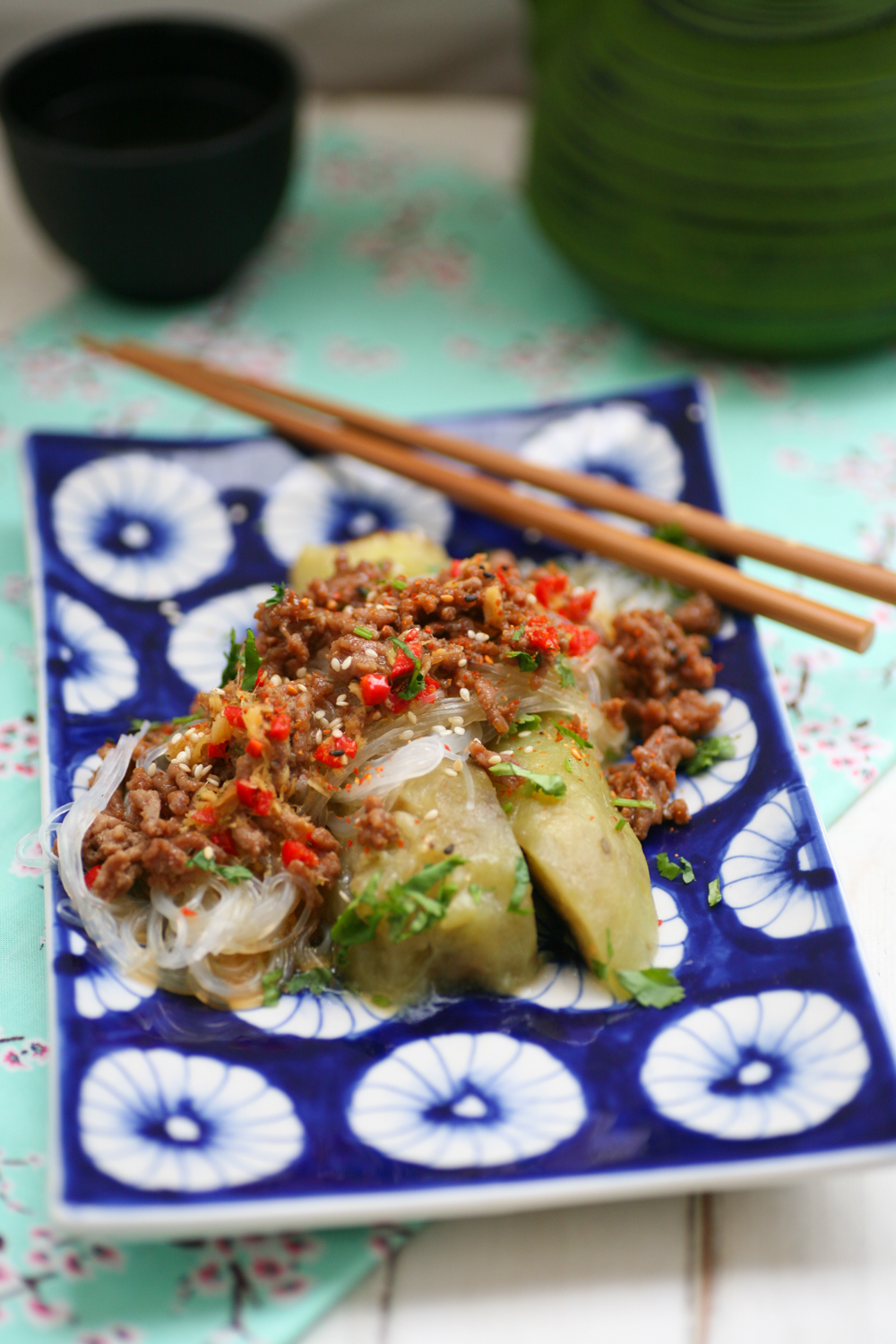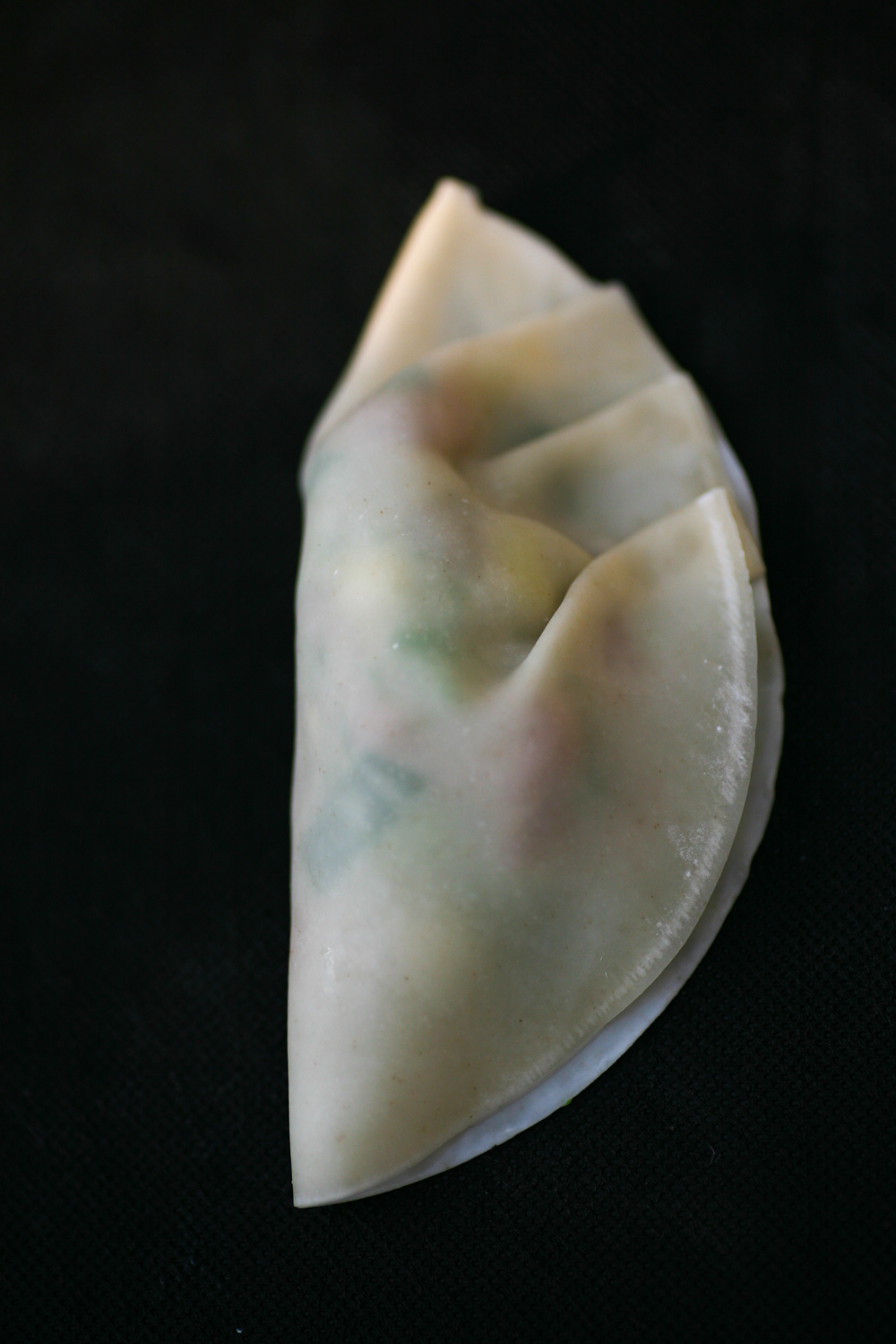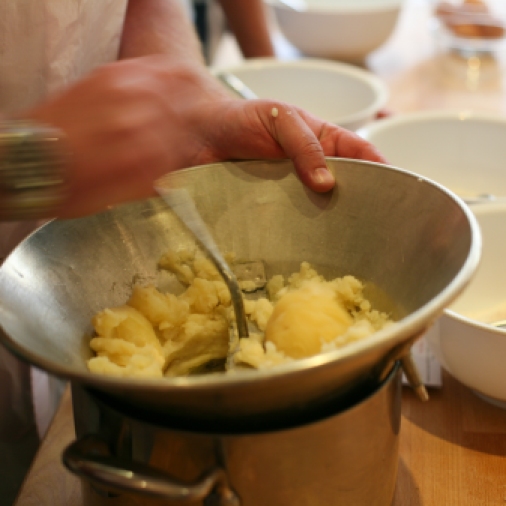
On a recent trip to Vietnam Mr B, Big A and Little Z (husband and two daughters) stopped off in Hanoi for a couple of days before heading south to Hoi An and it was during this stay I discovered a dish known as Bun Cha (pronounced Boon Cha – even the name of it appeals) that will stay with me forever. There have been certain times in my life that I have, often unexpectedly, had a meal that was off the delicious charts and consequently imprinted on my memory. This was one of them.

We had booked ourselves onto a guided tour of ‘real’ Hanoi with Hanoi Kids – which I cannot recommend more highly if you are planning a visit. The personal tours are conducted by local university students who show you their beloved Hanoi. The hope is that the students can improve their English and you enjoy an original type of tour. The tours are free so it’s a win win for everyone, although it’s only polite to pay for their lunch and drinks and leave a tip at the end (although there is no pressure to leave one).
Van and Nhung (our designated Hanoi Kids for the day) collected us from our hotel in Old Hanoi and after a few minutes discussion on what kind of things we enjoy doing they whisked us off to a few places they thought we should see, both on the tourist trail and the more hidden places.
Despite the tourists who flock to ‘The Temple of Literature’, the site of Vietnam’s first university, the place was breathtakingly calm and serene as recently graduated students wafted around in their stunning ‘ao dai’ – the national dress for Vietnamese women.

The temple is a place for them to take cherished photographs of themselves in all their finery having completed their studies; their graduation photographs if you will.
 We wandered around the large complex taking in our surroundings before heading back to the cool of our transportation and on to the next destination.
We wandered around the large complex taking in our surroundings before heading back to the cool of our transportation and on to the next destination.

After a morning of soaking up the some of Hanoi’s sites Van and Nhung promised to take us to one of their favourite Bun Cha establishments. New to Bun Cha we were open to their suggestion. Our driver dropped us off by the pavement where we found a collection of little tables with miniature blue stools where local Vietnamese were feasting on Bun Cha.

We were shown to a table and waited briefly for our meal to arrive. A large tin platter was placed on the small table, which we were huddled around and upon it were six bowls of broth filled with BBQ pork slices and patties. In the middle of the platter where mountainous piles of noodles, fresh herbs, lettuce and bamboo shoots.

The simplicity of the spread did not reveal the resplendent flavours that came to the fore after the first mouthful. Without exception we were all in culinary nirvana; even Little Z who has not such a developed palate – being 3 yrs old – devoured every mouthful. The atmosphere of eating in a local eatery with traffic and bikes whizzing by only added to the charm. All the tables were filled with locals, not a tourist in sight (apart from us that is).
At £2 a head it is without doubt the best cheapest meal I have ever eaten. If you are in Hanoi do check it out you won’t be disappointed. The address is : Bún Chả 34 Hàng Than, 34 Hàng Than, Hoàn Kiếm, Hanoi.
The afternoon was spent on foot touring the streets of Old Hanoi,which is no easy feet I tell you. Crossing a road in Hanoi is a tricky business, but with our guides on hand we managed to stay alive to tell the tale.

Some like to take a more leisured approach to daily life!!

We ambled around Hoan Kiem Lake, which is the heart of Hanoi. Within the frenetic metropolis the lake offers peaceful walks in the relative shade of the tree lined walkways. We visited the temple in the lake and heard about the legend of the giant tortoise and the sword.

The rest of the afternoon we spent wandering down the laberinth of narrow roads that make up Old hanoi, stopping off at temples and markets and of course sampling the famous egg coffee at Cafe Giang, a coffeehouse that’s been around for decades. (39 Nguyen Huu Haan) and is delightfully charming hidden down a dark little alleyway (we would never have found it without Hanoi Kids), over two floors scatted with it’s miniature tables and wooden stools, much to Mr B’s chagrin, as he is a good six foot tall. The girls loved it however as the seating arrangements in Hanoi were perfect for them.
So for those who have no immediate trips to Hanoi planned, fear not, here is the simple but truly delicious Bun Cha recipe that you can make at home. Don’t be put off by the length of ingredients, it is far more straightforward than it may appear and if you don’t have all the herbs just use one or two of those listed. Equally if you find green papaya too hard to source just add carrot. Ideally marinate the pork mince and slices and leave in the fridge overnight if you have time/remember. Failing that a couple of hours marinating will also be sufficient.
Bun Cha
Serves 4
Pork Patties and Slices
300g pork shoulder
300g pork mince
6 shallots, minced
6 garlic cloves, minced
2 spring onions, very finely chopped
1 tsp sugar
2 tsp fish sauce
2 tsp dark soy sauce
2 tsp salt
2 tsp honey
1 tsp freshly ground black pepper
To Serve
1 handful of mint leaves
1 handful of coriander leaves
1 handful of Thai Basil
1 large handful of bean sprouts
1 large handful of lettuce leaves
500g rice vermicelli noodles, cooked
Side of Pickles
quarter of a green papaya, thinly sliced
1 large carrot, sliced into carrot flowers (or simply sliced)
2 tsp salt
1 tbsp caster sugar
2 tbsp rice wine vinegar
Dipping Sauce
2 tbsp fish sauce
2 tbsp caster sugar
2 tbsp rice wine vinegar
250 ml water
1 chilli, sliced thinly
2 garlic cloves, diced finely
juice of half a lime
1. In a mixing bowl combine the pork mince with HALF of all the ingredients in the ‘Pork Patties and Slices’ section. Thinly slice the pork shoulder to around 1/2 cm depth, 5cm length x 4cm width approximately. Place in a separate bowl with the other HALF of the remaining ingredients. Cover both bowls and leave in the fridge to marinate overnight or for a couple of hours.
2. Next prepare the side of pickles by slicing the carrots, or if you are feeling ambitious make little carrot flowers. Simply peel the carrots and then make V cuts lengthways, without going all the way through the carrot. This way when you slice the carrot horizontally little carrot flowers have been formed. Peel and slice the green papaya and then put both the vegetables into a bowl with the salt. Set aside for 10 minutes before rinsing off the salt in water. Drain thoroughly and then place in a new bowl with the sugar and the rice vinegar. Leave to rest for an hour. This will allow the vegetables to absorb the sugary vinegar flavour.
3. Prepare the dipping sauce by mixing all the ingredients together. Leave to one side.
4. Cook the rice vermicelli according to the packet – few minutes normally in boiling water. Drain under cold water and leave to one side.
5. After marinating the pork, make small patties using your hands, similar to how you would make meatballs. It is easiest to form the balls if your hands have a little oil on them. Once you have formed a ball, gently flatten the pattie so that it is easier to handle when cooking.
6. If you want to be really authentic then you could BBQ the meats but as it is not always BBQ weather here in the UK, I find the oven grill works equally well. Preheat the oven grill to 180 degrees (I use fan oven). Place the slices and patties on the grill rack and grill for just under 10 minutes (or until nicely turned brown) before turning and grilling for a further 10 minutes.
To serve:
It’s a great dish for people to help themselves so place the herbs/lettuce/bean sprouts, dipping sauce, side of pickles and noodles in separate bowls. To heat up the noodles simple pour boiling water over them and drain them thoroughly! Then place the meat on a separate plate. Ideally serve in small little round bowls like those served in Hanoi (see photo above). My bowls are a little too large really so aim for a small bowl if possible. Guests pour a little dipping sauce in their bowl followed by a couple of slices of pork and a couple of pork patties and pickles. Then you dip a bit of vermicelli and fresh herbs/lettuce/bean sprouts into the bowl and then eat. The flavours and textures will sing to you and you will be finishing off bowls of the dish before you know it. If you run out of dipping sauce it is easy to prepare a fresh batch. Both my hosts in Hanoi did not finish off the sauce as it is sweet, although I couldn’t resist finishing off every last mouthful.
















































 We wandered around the large complex taking in our surroundings before heading back to the cool of our transportation and on to the next destination.
We wandered around the large complex taking in our surroundings before heading back to the cool of our transportation and on to the next destination.





















































